Seasonal Abundance and Species Composition of Cetacean Caught as By-Catch by Artisanal Driftnet Off the Niger Delta Nigeria by Ana Rita Onodera Palmeira Nunes in Examines in Marine Biology & Oceanography_ocean modelling journals
Abstract
A total of 315 dolphins were captured as by-catch, during the 575 fishing trips between 2017 and 2018, in two-landing sites (Imbikiri, Bayelsa State and Finima River State) offshore the Niger Delta Nigeria. The catches which consisted of 6 different species of cetacean , the short-beaked common dolphin (Delphinus delphis), the Risso’s dolphin (Grampus griseus), the Atlantic bottlenose dolphin (Tursiops truncatus), the Atlantic spotted dolphin (Stenella frontalis), Fraser’s dolphin (Lagenodelphis hosei). and the Long beak dolphin (Delphinus Capensis). The rainy season (April to August) recorded higher Cetacean catches than during the dry season (January, February, March, October, November and December). The short beaked dolphin (Delphinus delphis), was the most abundant (over 56%) during dry and wet seasons while the least abundant was Risso dolphin (Grampus griseus) about 6% during the dry and wet seasons. The variable seasonal abundance and species composition of cetacean observed in this study could provide benchmarks for the sustainability of cetacean species abundance of variability in the Niger Delta and more so in the Gulf of Guinea.
Keywords: Cetacean; Drift net; Catch composition; Artisanal fisheries
Introduction
The Niger Delta is the second largest delta region in the world with a coastline of about 450 kilometers and area of about 70,000km2 and makes up 7.5% of Nigeria's land. The delta has been described as the largest wetland in Africa and among the three largest in the world Whiteman [1]. Their major occupation is fishing (Figure 1). The Niger Delta is a rich fishing ground in Nigeria. Fisheries studies especially dealing with Cetaceans studies in the Niger Delta have been scarce in recent times. This is primarily because most information on cetaceans have been obtained from fishermen, who are known to catch dolphin species through bycatch. Dolphins in the Niger Delta reportedly prefer shallow coastal and estuarine waters of less than 20m depth or more, especially during the bonga season (their prey) from February to June. Dolphins captured around Brass Island in the Niger Delta where they are known to feed on adult bonga, mackerels, and ‘jellyfish’ occur Michael [2].
Figure 1: Map of Nigeria showing the study area within the Niger Delta.
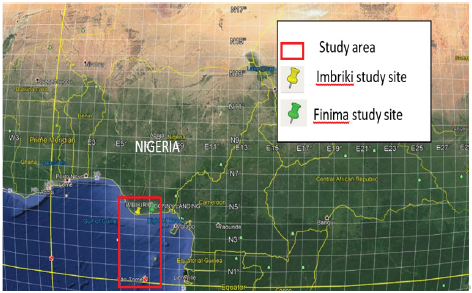
Artisanal fisheries target primarily small coastal pelagic, such as the herring species called bonga (Ethmalosa fimbriata) and Sardinella. Most artisanal canoes range in size from 7-12m and are powered by 9.5 to 40 horsepower outboard engine. The gears used include gill nets, drift net, beach seines, large meshed shark drift nets, hooks and longlines Nedelec [3] & Nadreev [4]. The artisanal fisheries unintentionally catch marine mammals like killer whales, dolphins, and sperm whales. Rutherford [5].
Study Methods
The study was carried out for 2 years (January 2018 to December 2019) during the 575 fishing trips between 2017 and 2018, in two-landing sites (Imbikiri Bayelsa State and Finima River State) offshore the Niger Delta Nigeria. Migrant Ghanaians (8 fisher men) and 2 observers were employed to assist in sample collection. Fishing was done two to four times in a month with two or four operational net casts made per trip using drift gill nets. Cetacean by catch from catches were sorted and recorded afterwards. By catch parameters like length were determined by electronic digital caliper, measuring tape and digital thickness. Fishing depth ranges from 11-2460m.
Results
Cetacean abundance
A total of 315 dolphins were captured by the drift net during the 575 fishing trips within the study period of 2017 and 2018, in the two-landing sites (Imbikiri in Bayelsa State and Finima int River state Nigeria). Figure 2 & 3 shows the monthly catches of the cetacean caught during the study period. The rainy season (April to August) recorded higher, than Cetacean catches during the dry season (January, February, March, October, November and December). Cetacean total catch peaked during the months of July and August (peak of wet season) in both 2017 and 2018. September and October (onset of dry season) no catch. While the months of November showed the least catches. A slight increase in total abundant catch was observed in the months of December to March (the real dry season).
Figure 2: Number of cetaceans caught throughout the period 2017.

Figure 3: Number of cetaceans caught throughout the period 2018.

Cetacean species abundance
Throughout the study period from 2017/2018, the most abundance (56%) is short beaked dolphin, followed by spotted dolphin (13%), long beak dolphin was 10%, Freser dolphin 8%, bottle nose was 7% and the least abundance was Risso dolphin 6% (Figure 4). During the dry seasons of 2017 and 2018 (Figures 5-8), the short beaked dolphin showed the highest percentage caught while the least were the Bottle nose and Risso’s dolphin. The wet season of 2017 and 2018 also showed the short beaked dolphin specie as the highest while the least was the Risso dolphin.
Figure 4: The percentages of the six different species in the period of the two years study (2017/2018).
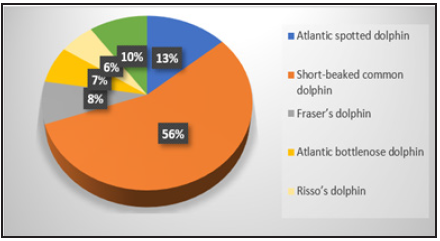
Figure 5: The percentages of the six different species in the period of the two years study (2017/2018).
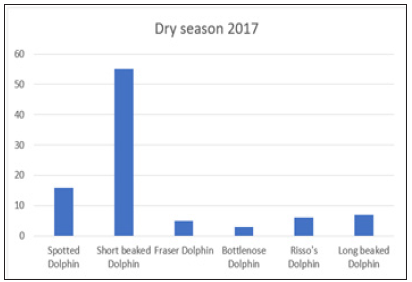
Figure 6: Seasonal Cetacean species abundance of wet season in the month of April, May, June, July, August and September 2017.
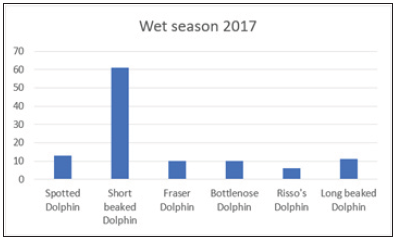
Figure 7: Seasonal Cetacean species abundance of dry season in the month of January, February, March, October, November and December 2018.
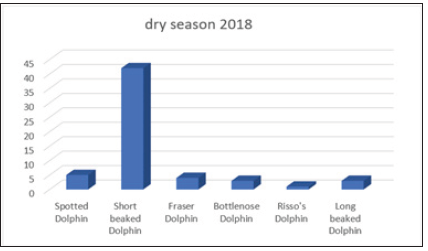
Figure 8: Seasonal species abundance of cetacean during the wet season in the month of April, May, June, July, August and September 2018.
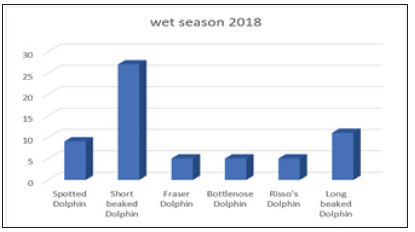
Discussion
Every year, at least 7.3 million tons of marine mammals are caught incidentally by drift net, purse seine (Rutherford-Fortunati, 2014). The seasonal abundance observed in this study could be due to a variety of reasons. This could be due to the availability of preys for the dolphins, the physicochemical parameters of the water, abundance of nutrients etc. The wet season when Cetaceans are most abundant could be attributed to higher primary productivity characteristics like increased dissolved oxygen, transparency, total dissolved solid, increased pH values and increased zooplankton and phytoplankton species Ndebele [6]. This conclusion however needs further studies to show probable links between species abundance and seasonal variability of physicochemical parameters and nutrients in the waters in the Niger Delta.
Conclusion
This study shows the abundance and species variability of cetacean bycatch in the Niger Delta fishing ground. It also provides information that may highlight the dangers inherent in fishing methods that could eventually lead to the mortality of some cetacean species. Further studies will however be required to assist in measures necessary for the biodiversity conservation of Cetaceans.
Acknowledgement
Our appreciation goes to Professor Larry Awosika for his critical review. We are also grateful to the management and staff of the Nigeria Institute for Oceanography and Marine Research for their assistance during the study. Lastly, we appreciate the local fishermen and others who provided local logistics in the study area.
References
- Whiteman A (1982) Nigeria: Its petroleum geology, resources and potential. 1: 238.
- Michael U, Koen V (2010) Initial evidence of dolphin takes in the Niger Delta Region and review of Nigerian Cetaceans. Wetland International Nigeria, Conservation and Research of West Africa Aquatic Mammals, Ghana, p. 1883.
- Nedelec C (1990) Definition and classification of fishing gear categories. Rome, p. 92.
- Nadreev N (1996) Handbook of fishing gear and it is rigging. Jerusalem Programm for Scientific Translations, p. 454.
- Rutherford F (2014) Commercial fishing: Methods behind the madness. Retrieved from Be fair to Be Vegan.
- Ndebele MR, Musil CF, Kaitt L (2012) Phytoplankton biomass and primary production dynamics in lake Kariba. In Lake and Reservoirs Research and Management 17(4): 274-289.




No comments:
Post a Comment